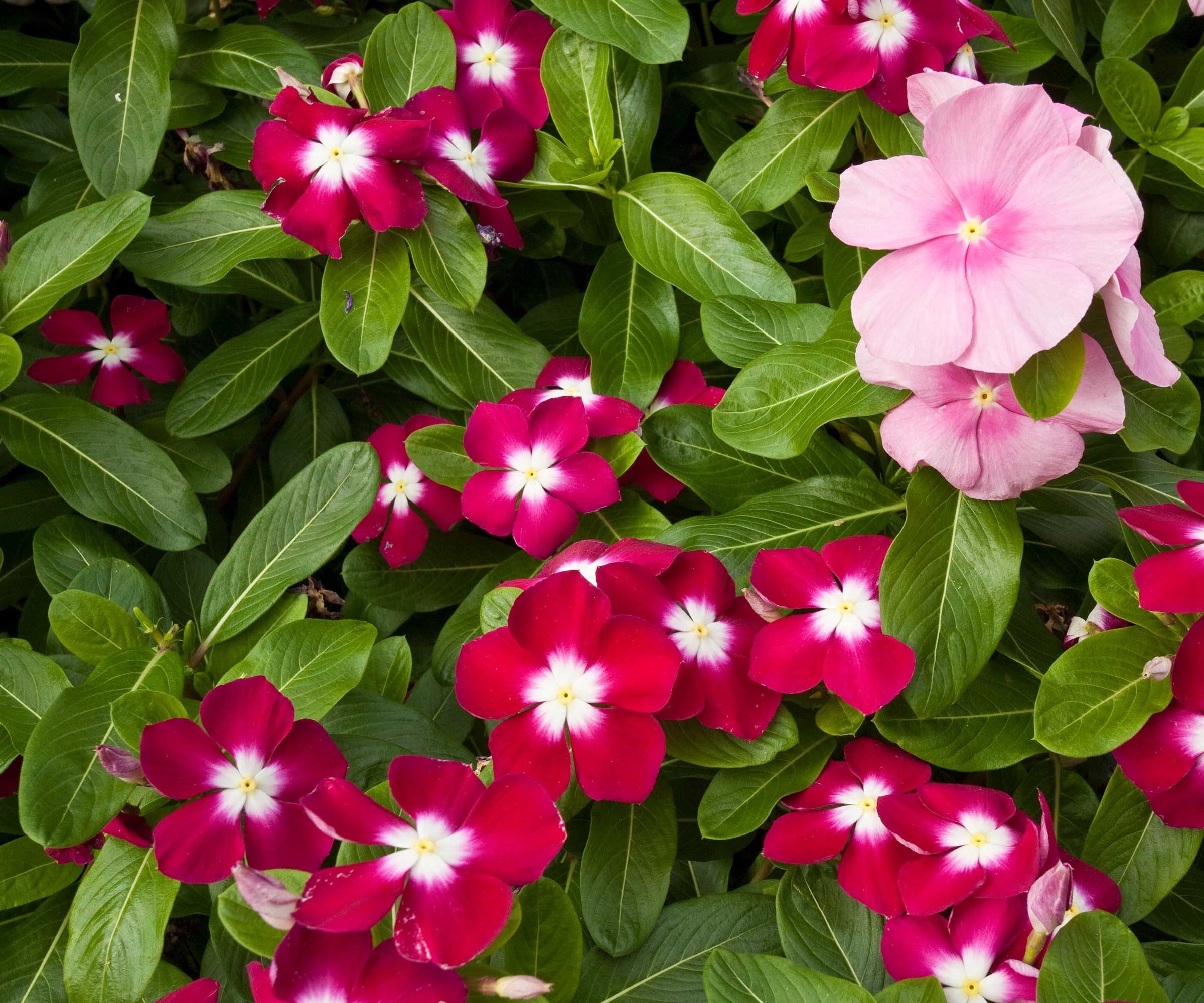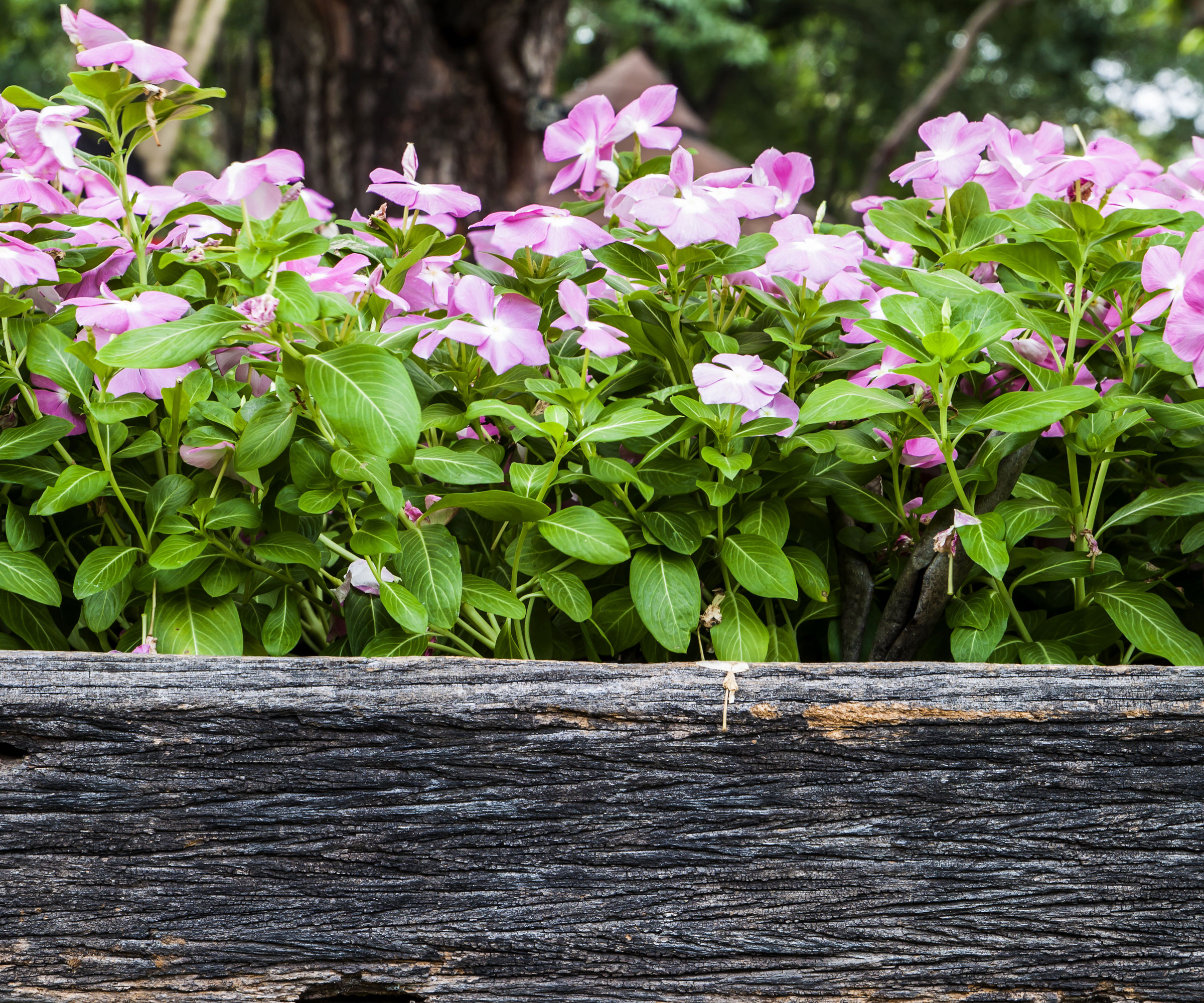
When it comes to shade gardens, impatiens can be relied on to deliver. With bright and brilliant blooms, you can fill your borders and pots with pinks, red, whites and purples, helping to add color to even dark plots.
Impatiens tend to be used as annual bedding plants in most of the United States. They can be grown as perennials but require warm, tropical weather only found in USDA Zones 10 to 12.
Impatiens are some of the best shade plants, thriving in dimly lit gardens and patios. They can be both the star of the bed or basket and also do quite well with an ensemble cast. Here, garden experts reveal how to grow impatiens for spectacular displays this year.

How to grow impatiens
When it comes to flower bed ideas, the Impatien genus gives us two readily available options: Impatiens walleriana, known as busy Lizzie, or simply impatiens, and Impatiens hawkeri, commonly known as New Guinea impatiens.
Although in the same genus, the origins of each species are vastly different, with impatiens hailing from eastern Africa and New Guinea impatiens being native to Papua New Guinea and the Solomon Islands.
When compared side by side, the differences are apparent. Busy Lizzie is the smaller and more delicate of the two in flower and leaf size. Its habit is more mounded and spreading.
New Guineas, on the hand, are the beefier of the two species, with larger, showier flowers and leaves. It grows more upright, as well. They give gardeners a bit more flexibility in gardening with more tolerance of sun.
New Guineas are also more disease tolerant, as the common impatiens has had recent issues with a disease known as Impatiens Downy Mildew.
Growing habits of impatiens

‘Thanks to modern breeding, today’s impatiens varieties offer improved disease resistance, better flower forms, and greater garden durability,’ says Alexander Betz, landscape designer with Plant by Number.
‘Imara® XDR is one of the most significant advancements in impatiens breeding with strong resistance to downy mildew,' Alexander adds. 'I recommend Imara® for its lush habit, vibrant color selection, and low-maintenance performance.'
Another of Alexander’s recommendations is Glimmer™ Salmon, with its romantic-toned double blooms and built-in mildew resistance. ‘It’s one of the best annual flowers for containers where I want to add texture and sophistication.’
Laura Janney, CEO of The Inspired Garden Masterclass, prefers using New Guinea impatiens over busy Lizzie in her clients’ designs. ‘I find them a little hardier in the sun,’ she says. ‘The leaves are really beautiful, too, and they give that tropical plant vibe, much more vibrant and interesting colors’ than busy Lizzies.’
Rather than planting in rows as landscapers might do, her team clump them together in groups of three or five.
‘I usually pair them with another annual, such as begonias,’ she explains. ‘I'll do begonia bulbs in one color and then the impatiens in another color. That way, the flower stands out more. If you use too many of the same colors, it all blends together.’
Laura’s favorite New Guinea impatiens are the varieties within the Sonic series, particularly Sonic Light Lavender, Sonic Light Pink and Sonic Sweet Purple. These flowers have a bit of bicolor variation on the petals, and Laura says that touch ‘just makes the planting have a little bit of a sparkle.’
‘You don't want to plant them en masse,’ says Eva Monheim, garden speaker, author and faculty at Longwood Gardens. ‘Because the deer will come en masse and just eat everything.’
If you have deer but want to enjoy the sparkle of any sort of impatiens, Eva has found a fairly simple solution. ‘Plant them with other plants deer don’t like surrounding them,’ such as the perennial astilbe, she explains.
‘If you put impatiens in with astilbe, the likelihood of deer going for that is a lot less than if they see something else.’ Products such as Liquid Fence Deer & Rabbit Repellent Spray found at Target, can also help keep that four-legged pest from demolishing your impatiens.
Care guide for impatiens

- Soil: 'They do like slightly acidic soil,’ Laura says. ‘No matter what, they need well-draining soil, so if your space holds water, it's probably not a great fit.’ Laura’s solution when planting is to dig a bigger-than-needed hole and to add in rich organic soil. Try this Miracle-Gro soil from Amazon.
- Light: As noted earlier, impatiens enjoy shade. ‘Morning sun is fine, but it’s a shade flower, so it's always best if you have the afternoon shade.’
- Watering: ‘It's not a drought-loving flower, even though it could handle warm days, but it’s not a flower that you could just forget about,’ Laura explains. 'It needs consistent water, but don’t overwater it.’
- Fertilizing: Impatiens are heavy feeders and do best with some added fertilizer. ‘I like to alternate between a regular Miracle Gro or whatever your regular fertilizer is and a bloom boosting fertilizer,’ Laura says. ‘So, one focusing on growth and one focusing on bloom’ such as this organic bloom booster, available from Walmart.
- Pruning: ‘If you want bushy growth, try pinching out,’ Laura advises. ‘When I put them in a garden or container, I will cut back every other bloom so you still have blooms going on, and then you still have some stems to give you that bushier growth.'
- Pests: Other than deer, Laura hasn’t faced many problems with growing impatiens ‘except root rot, if you water too much,’ she says. ‘Also, if they get too wet, the leaves turn yellow, or the roots get mushy.’
FAQs
What are SunPatiens?
SunPatiens is a hybrid type of impatiens that is fairly new to the garden market. The plant breeder Sakata developed SunPatiens from several different species within the Impatiens genera, creating a plant that can be planted in full sun and hot, humid conditions. In fact, SunPatiens do not perform well in shade, contrary to conventional thinking around impatiens in general. You can find a number of different varieties of SunPatiens from Burpee.
When deciding the appropriate time in spring to plant impatiens outdoors, think about the climate in impatiens’ native habitat. ‘This plant is sensitive,’ Laura says. ‘I wouldn't plant it if temperatures were under 50°F. In fact, I'd wait until nighttime temperatures are a little higher.’
For more suggestions of annual flowers that do well in shady gardens, check out our guide of the best part-shade annuals for the job. Add in a few of these plants that do well with 3 to 6 hours of sunlight, and your garden will sparkle with their blooms from dawn to dusk.
Shop garden accessories
These yellow gardening gloves are tough and durable, helpful when planting and pruning impatiens.







